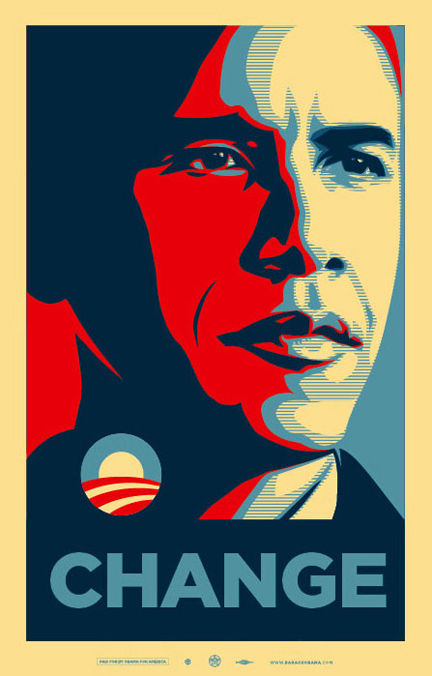This morning’s keynote session at ad-Tech Asia was given by Scott Goodstein, External Online Director on the Obama presidential campaign. Scott and his team looked after all the online channels that were outside of www.barackobama.com.
With perfect hindsight, of course we know that this campaign was a huge success. However, when the campaign began, before most people had ever heard of Barack Obama, there was some risk involved in using digital and social media for a political campaign. If you consider that Campaign Managers (and Marketing Managers) spend all their time trying to control the messages out there, the use of digital/social media requires a bit of a leap of faith.
Scott Goodstein’s first point addressed this. The most essential element of any campaign is to have a strong message and a good product. He fervently believes that they had both in Barack Obama.
This does not mean that you should shy away from social media if there is a chance there will be negative content posted about you/your product/your brand. But, you should be prepared to hear negative comments and respond to them and act on them.
This was Scott’s second point about why the Obama digital campaign succeeded. The online campaign team made an effort to respond to every question or comment posed to the campaign (and there were a lot!). This took huge drive, organisation and human resource, but not necessarily a great technology investment. Outside of www.barackobama.com, all the online communication took place using free online tools such as facebook, myspace, twitter, youtube and eventful.
The purpose of using digital media for the Obama campaign was to engage the ‘long tail’ of voters and supporters who did not access traditional media. While the majority of target voters did watch television and read the papers, there was a significat minority who engaged only via a wide range of digital tools. The Obama campiagn started on just one or two platforms, and focused on small targeted segments.
In the South, one campaign targeted barbers. Why? Because barbers spend all their day talking to their customers. If you can make barbers talk about you, your message will spread rapidly. My cousin Phil the Barber of Westborough MA is fairly typical here. He spends all his day chatting to his customers, and every spare moment in between appointments interacting on Facebook (Go the Bruins! Right Phil?).
The Artists for Obama campaign, allowed artists to make and post images to support the campaign. The now iconic image at the top of this post was one of these. It gave the artists a way to help the campaign (imagine how much an ad agency would have charged!), gave exposure and encouraged interaction.
The Obama campaign really did leverage their advocates. If you visit the site even now that the Presidential race is over, what remains is the supporter rallying and organising functionality. The idea here is that supporters can find a interest group or event in their area, and if they’re really keen, can sign up to organise a group themselves. The site offers a lot of tools and support to anyone who want to organise events. Now it’s about pushing the Obama agenda for change. During the election campaign, this was used for raising funds for the campaign and encouraging people to get out and vote.
Scott also emphasised that the technology available changed during the campaign. The online Obama shop was partly a success because there was a shift in attitude to making online purchases. More people began to believe it was safe. Social media and mobile phone technology exploded. Obama’s team were willing to experiment, and to commit resource even to smaller segments. I should mention here, that Scott’s idea of a smaller segment was the one million subscribers to their mobile messaging service…
The Obama team were not afraid to direct traffic away from their own ‘controlled media’ (their website and emails) to the more open terrain of social media like Facebook and Youtube. They used video very cleverly for everything from encouraging supporters to get out and vote to upselling contributors to make a larger contribution. Barack Obama even recorded a ringtone for mobile phones. You too can have your ringtone saying ‘it’s Barack Obama. Pick up!’.
And finally, during the Q & A, Scott mentioned the pre-emptive use of search. He cited an incident where a political candidate knew a scandal was about to break. The candidates team posted their side of the story, linking up to all the relevant keywords, so that once the scandal broke, their content also appeared on the first page of search results also. There’s some smart and adventurous thinking…
